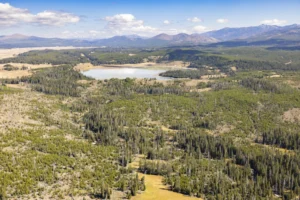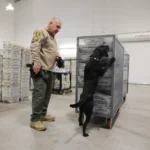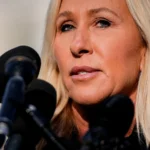Mormonland: Examining the LDS Church’s Wyoming Real Estate (Part 1)
Property records show Church of Jesus Christ of Latter-day Saints owns nearly 100K acres across state
- Published In: Other News & Features
- Last Updated: Feb 06, 2023
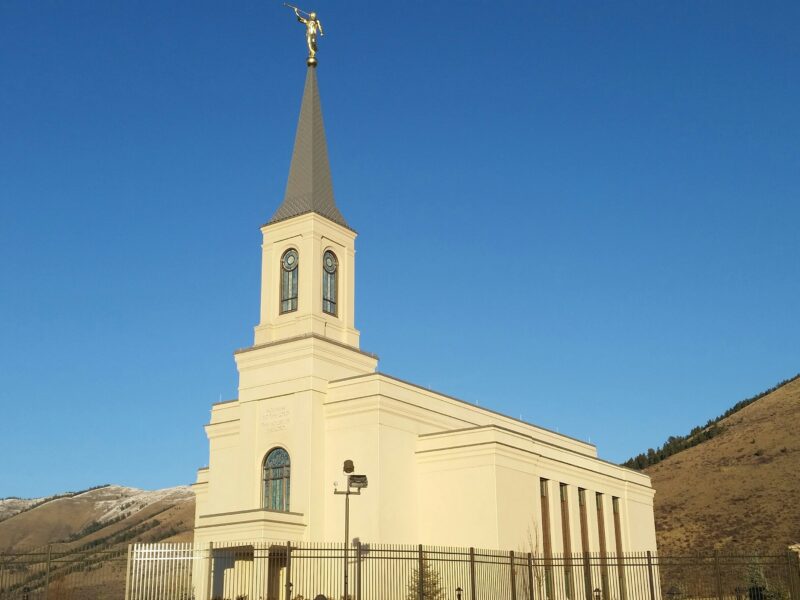
Wyoming will soon be home to three Latter-day Saint temples, one of which is the Star Valley Temple, located in Afton. (Courtesy photo from Bobjgalindo via Wikimedia Commons)
By Sarah Scoles
Special to the Wyoming Truth
This story has been updated with an accurate acreage number as of 3:00 p.m. MST on Feb. 6, 2023.
Take a drive east out of Sheridan, toward Wyarno, and about 25 miles from town, you’ll be surrounded by rolling, grass-rich ranchland.
Keep going for 40 more minutes, and the same ranchland will still envelop you.
It’s not run by some meat magnate or a celebrity playing cowboy. Instead, it’s owned by the Church of Jesus Christ of Latter-day Saints, commonly known as the Mormon or LDS church. This vast swath of land, covering tens of thousands of acres, is just one of dozens of properties in Wyoming—and of thousands across the country—that traces its title back to the religious organization.
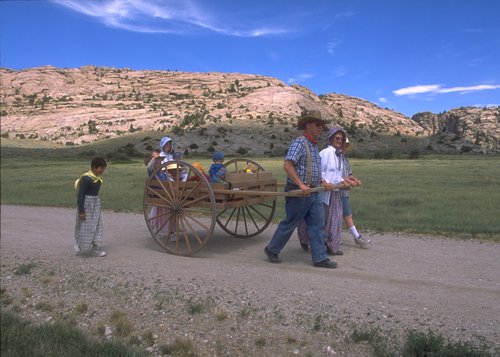
The modern scope of the LDS church’s real estate holdings became public in 2022, when Truth & Transparency, which describes itself as “a nonprofit newsroom dedicated to religious accountability through impact journalism,” attempted to capture and release the information. The resulting map and database show that the church seems to have the highest-valued property portfolio of any private entity in the U.S., and has top-five standing in acreage ownership. The organization also is a heavy-hitter among private landowners in Wyoming. Given that, the religion’s wealth raises questions about the role—and responsibility—of churches in the modern world and in Wyoming.
Open Range
The LDS church has done business under a multitude of corporations and holding companies, making it hard to understand its full portfolio. But Ethan Gregory Dodge and Ryan McKnight, who ran Truth & Transparency, noticed that properties known to be associated with the LDS church also were associated with a common address, independent of which corporation owned them. The address traced back to a church-owned office building in Salt Lake City. Using a third-party service called Reonomy, which aggregates commercial real-estate data, Truth & Transparency sifted for properties linked to that common address.
The Las Vegas-based nonprofit published leaked documents and exposed financial information, policies and abuses related to both the Mormon church and the Jehovah’s Witnesses. Truth & Transparency announced that it would cease operations after releasing the results of its last investigation—this one, about real estate, which came out in April 2022. Watch Tower Bible and Tract Society, the governing body of the Jehovah’s Witnesses, had filed a lawsuit that hit the organization’s finances, alongside pandemic tribulations. The property investigation, which started in 2020, had been put on hold while the group dealt with those difficulties.
Reonomy doesn’t include single-family residences, and Truth & Transparency doesn’t claim its database includes all LDS holdings, although the nonprofit took steps to ensure there weren’t false positives. With those caveats, their findings indicate the church owns at least 1,754,633 acres across 15,963 properties, with a minimum market value of $15.7 billion.
In Wyoming, Truth & Transparency’s work suggests the church owns about 33,627 acres, 26,694.35 of which are in Sheridan County. A Wyoming Truth analysis of assessors’ databases in the three counties in which Truth & Transparency uncovered the most owned acreage, however, brings it closer to 100,000, with around 85,830 in Sheridan County, 7,770 acres in Natrona County and 3,190 acres in Uinta County. Most of the large plots are agricultural.
Many of the small-acreage properties in the state, though, are home to LDS church buildings where 171 congregations gather. Wyoming has the third-highest percentage of LDS members in its population, with Utah coming in first and Idaho second. They also are the sites of temples, of which Wyoming will have three: in Cody, Casper and Star Valley. Star Valley’s is operational, while workers have broken ground on the Casper facility; Cody’s building remains in the planning stages.
But some holdings also are historically significant to the LDS church. Some land in Natrona County, for instance, is set aside in part to preserve Mormon heritage, being the purported site of tragedy during the religious pioneers’ trek westward.
In the 1850s, two handcart companies traveling west across Wyoming began their journey too late in the year and got trapped by winter weather. One group, the church said, sheltered in an area called Martin’s Cove, near the Sweetwater River. “A number of the company died in Martin’s Cove, but many more were rescued,” according to the church’s website. In total, around 200 of the 1,075 trekkers in the two companies passed away on the trip.
“There’s a lot of history in that particular area,” said Tony Young, an active member of the LDS church who worked as deputy chief of staff for former Gov. Matt Mead.
In 1996, the church bought a large property, the Tom Sun Ranch, that acted as a gateway to Martin’s Cove. Today, the asset is known as Handcart Ranch, and it comes complete with a visitor center. Modern-day church youth sometimes reenact the journeys of their pioneer predecessors, pulling handcarts across the western land.
Martin’s Cove itself, though, isn’t for sale: It belongs to the Bureau of Land Management (BLM). The church did attempt to buy that land from the government, earlier this century–an action that Wyoming residents, and senators, generally opposed.
At the time, co-founder of the Alliance for Historic Wyoming, Barbara Dobos, said at a congressional field hearing, “Passage of this bill would create a terrible precedent for selling off our national historic and prehistoric public sites to select special interest groups by political means.”
A bill that would have allowed the church to buy the land didn’t pass, but the BLM decided to lease the land to the church in 2004. Even that proved controversial: In 2005, the American Civil Liberties Union filed suit against the Secretary of the Interior and the director of the BLM, arguing that the government was giving special treatment to a private entity by brokering the deal and by allowing on public lands interpretive historical information filtered through its own lens and through the Mormon missionaries who staff the site.
The church and the state, in other words, got a little too close for constitutional comfort.
Check back tomorrow for part 2.






